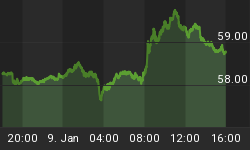The Federal Reserve cut interest rates again this week, but signaled that it may be done cutting for the time being.
It was the third interest rate cut this year, which marked an about-face after successive increases over the previous few years. The central bank was forced into monetary easing after the global economy showed signs of slowing down, made worse by the U.S.-China trade war.
However, despite the browbeating from President Trump, Fed Chairman Jerome Powell indicated that the latest cut of 25 basis points might be the end of the line, unless things deteriorate further. “The current stance of [interest-rate] policy is likely to remain appropriate” if the economy continues on its current growth rate, Powell said.
The result was something of a mixed bag for both stocks and for crude oil. The cut was widely expected for some time, so there was little suspense in the announcement. Reading between the lines, the wording and tone from Powell suggests that it will take much more upheaval to convince the central bank to make any additional cuts.
The rate reduction also comes at a time when the data on the economy is becoming more mixed, which is arguably slightly better than the more obviously negative trajectory the economy had seemed to be on only recently. U.S. GDP growth slowed in the third quarter to just 1.9 percent, down substantially from 2.9 percent a year earlier, but also a better result than some had feared.
Many sectors of the U.S. economy are in decent shape, although the deep contraction in business investment and manufacturing activity is raising some causes for concern. Some actually pointed to the contraction in activity in the oil and gas industry as one obvious source of trouble. Related: Opportunities Arise Amidst A Blitz Of Negative Headlines
But a recent round of corporate earnings reports were better than expected, even though profits have contracted compared to a year ago. Some economists are breathing a sigh of relief, saying that the results greatly diminish the odds of a recession.
Still, there are plenty of pitfalls ahead. Consumer spending has been strong, but has also begun to slow, expanding at a 2.9 percent rate in the third quarter, down from 4.6 percent in the second. “We’re still in an expanding economy, but one that is expanding at a slower clip,” Gregory Daco, chief U.S. economist at Oxford Economics, told the Wall Street Journal.
And with manufacturing actually contracting, there is still plenty of risk to the broader economy. “The danger is that businesses begin to pull back not only on capital spending but also on payrolls, which would take much of the steam out of growth in consumer spending,” Richard Moody, chief economist at Regions Financial Corp., wrote in a note.
The big question in the near-term – stop me if you’ve heard this before – is what happens with the U.S.-China trade deal. The Trump administration is raising expectations regarding the “partial” trade deal announced in early October. Trump tweeted on Thursday that the deal would be completed soon, and that he and Xi Jingping would personally sign the agreement.
However, Bloomberg reported that Chinese officials are “casting doubts about reaching a comprehensive long-term trade deal with the U.S.,” even though they are inching closer to the “phase one” part of the deal. Chinese officials said privately that they “won’t budget on the thorniest issues,” Bloomberg reported. They are concerned about Trump’s erratic nature and that he might back out of any deal that is signed.
That does not necessarily prevent the first phase from moving forward, which could include China purchasing American farm goods in exchange for a delay in tariffs. But it’s not clear that such a modest agreement really moves the needle on global growth, which has been hindered by trade protections. Tariffs on hundreds of billions of dollars’ worth of trade would presumably remain even if “phase one” goes forward. Related: Drone Deliveries Just In Time For Christmas
“There was a lot of complacency building in around trade over the last several weeks and China is reasserting a posture saying we’re not anywhere close to done,” Michael Purves, CEO of Tallbacken Capital Advisors LLC, told Bloomberg on Wednesday. “That’s why the market is off today and Treasuries are rallying.
Oil prices slid mid-week, and fell again on Thursday on news that OPEC increased production in October, which actually shouldn’t be a surprise because of the return of the Abqaiq facility after the outage in September.
Still, even oil analysts say that the trade deal is one of the most important near-term variables to watch. “We have to keep an eye on the trade deal,” Ashley Petersen, oil market analyst at Stratas Advisors in New York, told Bloomberg. “This is going to be a problem from the rest of the year so there’s going to be more inter-week volatility to come.”
By Nick Cunningham, Oilprice.com
More Top Reads From Safehaven.com:
















